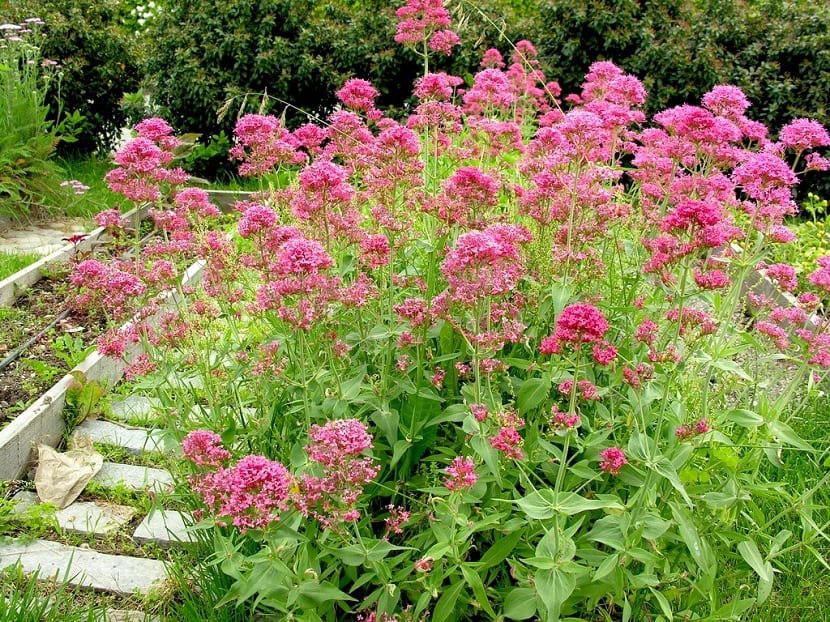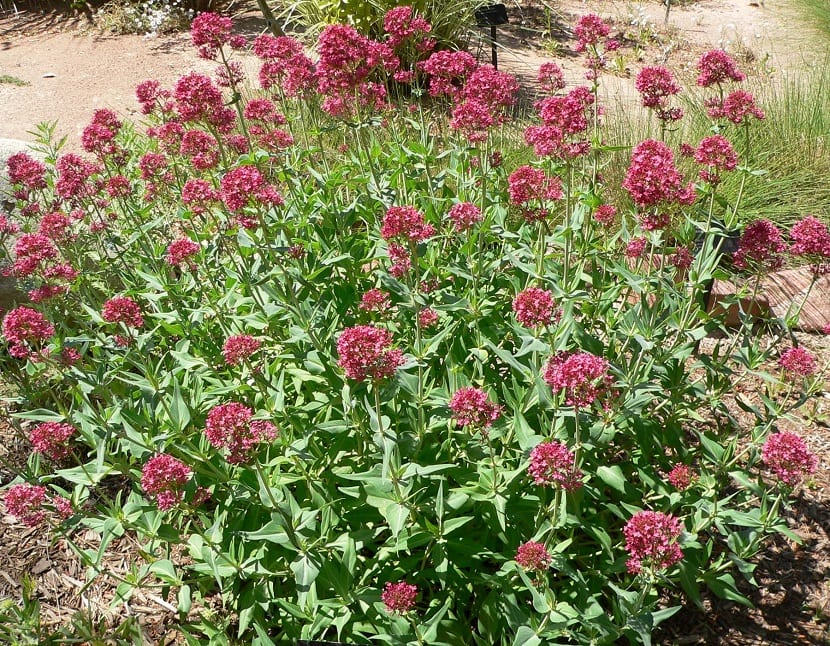
Today we are going to talk about a plant commonly known as red valerian. Its scientific name is Centranthus ruber and it also has other names such as St. George's herb, milamores or Centranto. It belongs to the Valerianaceae family and comes from the Mediterranean basin.
In this article we are going to explain its main characteristics, the uses it has and the care it needs. Do not miss it!
Key features
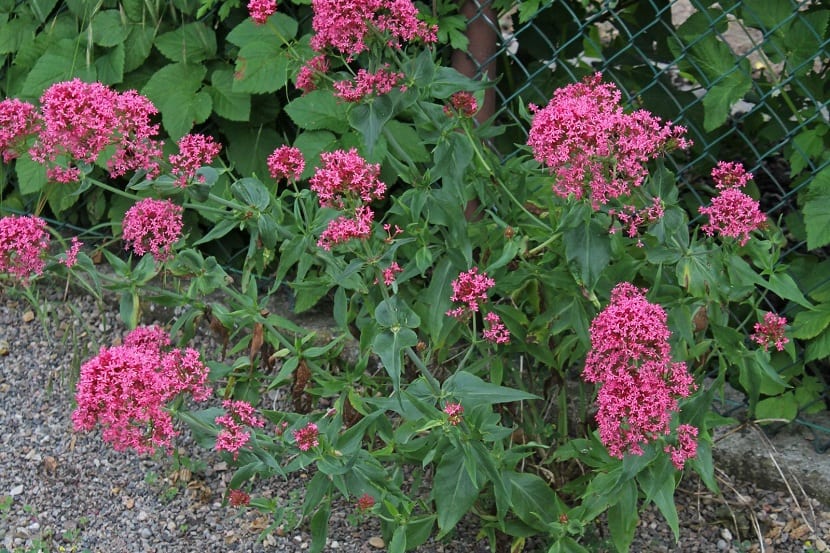
It is a fairly lively plant that manages to grow up to 60 cm in height. It is quite branched so it has a quite rustic and vigorous appearance. It usually grows colonizing the ruins and is found around naturalized gardens.
It has shiny green lance-shaped leaves. Its flowers are white or red and they are placed forming inflorescences. They are quite scented, so when you get closer you know that it is a red valerian.
It has easily adapted to living in more humid soils rich in organic matter. They are good to associate with sages, lavender y nepetas with a good aromatic bearing in combination of all of them. Its flowering takes place twice a year. The first takes place for quite a long time in the middle of spring and the second lasts less and takes place in early autumn.
It is also allowed to grow in pots, although it must be taken into account that the ramifications will not be as abundant due to the limitation in space and growth. By having less branching, its flowering will also be less abundant.
Uses of red valerian
It is a plant widely used in the field of medicine. The effects are similar to that produced by common valerian. Its leaves are used to be consumed both fresh and cooked. The roots are used in herbal shops as a treatment for nervous disorders. Surely you have heard more than once that if you are nervous before an exposure or something, take a valerian. It can also be used to induce sleep in case of stress.
Another of its uses may be the one of decoration in walls, sown in steep slopes and rockery. It is perfect to compose flower beds together with other plants that are more resistant to drought. For gardens with a drier climate, the Centranthus ruber it is a good option to cover the ground completely. Moreover, it is favorable for the appearance of the garden if the climate is quite dry and the soil poor in nutrients.
Requirements and cares
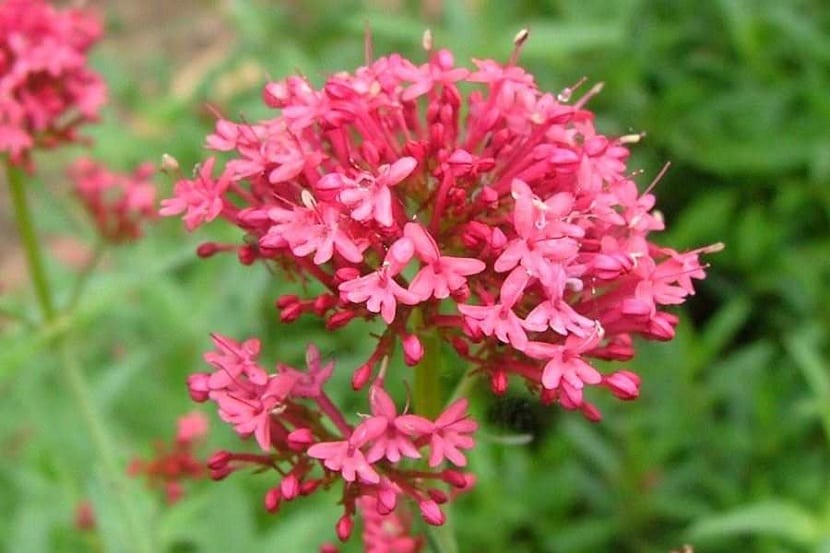
It is a plant that adapts quite well to living in other soils that are more humid and rich in organic matter, although it can also live in poor soils and dry climates. It is normal that if the environmental conditions are less favorable, the number of branches and, therefore, the number of flowers will also be less. This is the reason why it is better to place them in full sun and with well-nourished soils that can maintain some constant humidity. Tolerates semi-shadow. The optimum temperature range for the plant do not have problems in its development is 15-25 degrees. It is the ideal temperature for areas with a Mediterranean climate.
As for the soil, you need it to have a good drainage. If the water is not well absorbed and puddles, we will be having problems in its development. We will have to add 1/4 of sand and some of perlite to have a correct drainage and avoid water accumulation. They are able to thrive well on stony ground, although the most optimal is that it is a chalky soil.
They don't need a lot of watering. The most common is to water it twice a week with a medium amount of water. If we are in the hottest summer season, we can water 3 times a week which will be more than enough. Its cultivation is quite simple and you will be able to enjoy a great resistance that they have to the typical pests and diseases of the garden. It is possible that, if the humidity is too high, they could be attacked by aphids y mealybugs.
Maintenance and multiplication
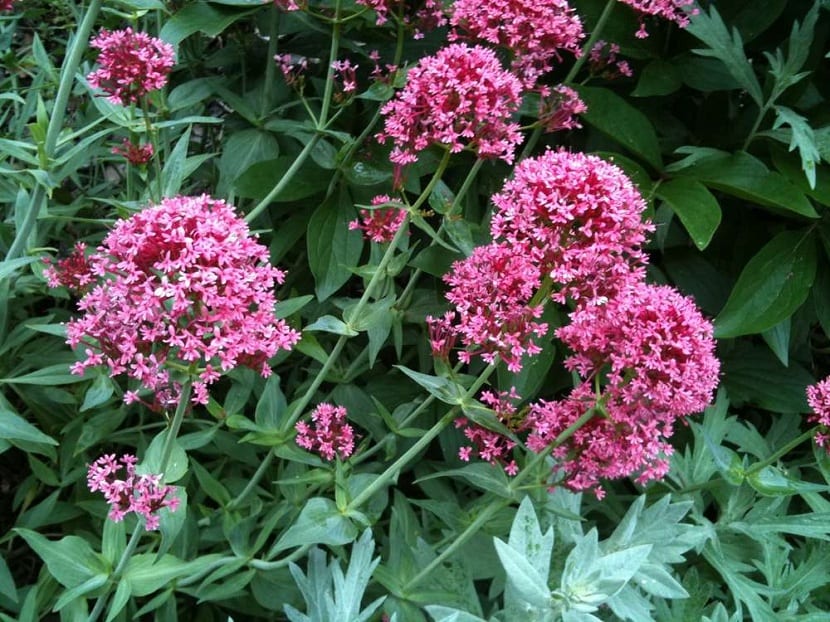
El Centranthus ruber It needs some maintenance if we want to have the optimal conditions for its development. If, for example, in our area it is very cold at night, we will have to cover it or protect them with something. When it is planted in greenhouses, it does not have problems of low temperatures or frost, but it is more prone to being attacked by pests such as those mentioned above, since the moisture content is higher.
It needs a pruning after the flowering season and about 5 grams of fertilizer composed of each plant that we have in the spring time. With the high temperatures and the development of the double flowering (the spring one and the later one in autumn) it needs a boost to be able to grow well. The amount of compost that we use will depend entirely on the quality and nutrients that the soil has. If we have planted it in a soil with excellent properties of medium moisture retention and rich in organic matter, we will need less or no fertilizer. On the contrary, if the soil is more stony, more fertilizer will be needed to support flowering.
As for multiplication, it can be done in several ways. The first is by seeds. Normally its germination time is not too long, but its reproduction by seeds is less efficient. The second form of multiplication is by division of the mat. In this way the development and growth is much greater. You have to be careful with its individual propagation, because it tends to grow and expand to the point of becoming an invasive plant.
If we see that it is beginning to take up too much space in the garden, it is better to remove the excess bushes to control growth. Remember that if your garden is in an area where rainfall is scarce and the soil is quite poor, with the red valerian will be able to cover the less covered areas.
I hope that with this information you can know more about the Centranthus ruber and it helps you to take care of it and enjoy it in your garden in combination with other plants that make a perfect game to win in decoration.
